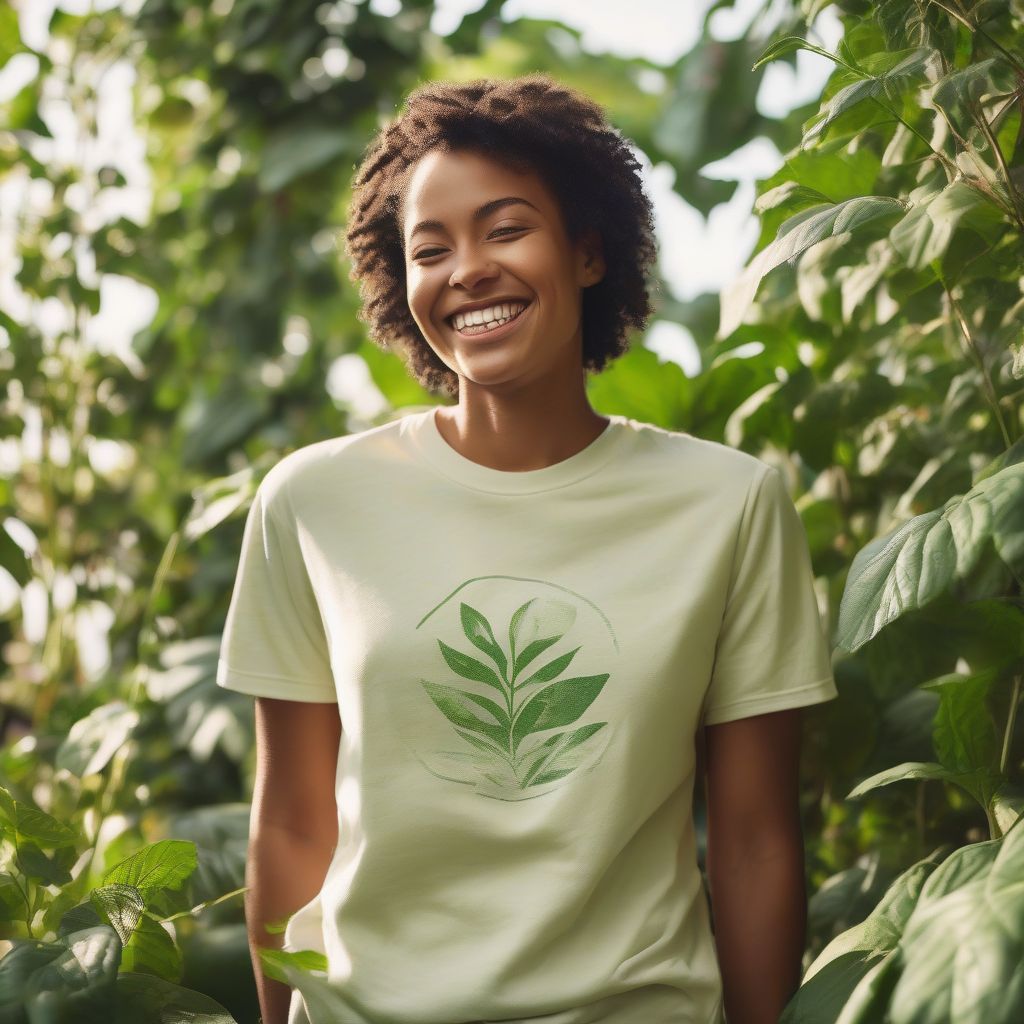Imagine slipping into a shirt so soft, it feels like a gentle breeze, knowing your comfort isn’t costing the earth. That’s the magic of eco-friendly fabrics! But like any cherished garment, they need a little TLC to stay vibrant and strong. Don’t worry, it’s easier than you think! This guide is your roadmap to keeping those sustainable threads looking their best, wash after wash.
Why Choose Eco-Friendly Fabrics?
Before we dive into the care guide, let’s take a moment to appreciate why eco-friendly fabrics deserve a spot in your wardrobe. Unlike conventional fabrics that often rely on harsh chemicals and resource-intensive processes, eco-friendly options are made with our planet in mind. We’re talking:
- Reduced Water Consumption: Did you know it takes over 700 gallons of water to produce a single cotton t-shirt? Many eco-friendly fabrics require significantly less water, easing the strain on our precious resources.
- Lower Carbon Footprint: From the field to the factory, the production of conventional fabrics often releases a hefty amount of greenhouse gases. Eco-friendly alternatives strive to minimize this impact, promoting a healthier planet.
- Gentle on the Skin: Say goodbye to those itchy, scratchy fabrics! Eco-friendly materials tend to be gentler on the skin, making them ideal for sensitive souls and little ones.
Decoding the Labels: Common Eco-Friendly Fabrics
Organic cotton, linen, hemp – the world of eco-friendly fabrics is wonderfully diverse! Here’s a quick rundown of some popular options and their unique care requirements:
1. Organic Cotton: The Breathable Classic
 Organic Cotton T-shirt
Organic Cotton T-shirt
- Care Tips: Organic cotton is your easy-going friend. It’s usually safe to machine wash with similar colors in warm or cold water. Line drying is ideal, but you can toss it in the dryer on low heat if needed.
2. Linen: Effortlessly Chic and Durable
- Care Tips: Linen loves a gentle touch. Hand washing is best, but if you’re short on time, machine wash on a delicate cycle with cool water. Avoid harsh detergents, and always air dry to maintain its beautiful drape.
3. Hemp: The Strong and Sustainable Choice
- Care Tips: Hemp is a workhorse fabric that can handle machine washing. Opt for cold or warm water and a mild detergent. Like linen, air drying is recommended, but low heat tumble drying is acceptable.
4. Recycled Materials: Giving Old Clothes New Life
- Care Tips: Fabrics made from recycled materials, like recycled polyester or cotton, often have specific care instructions depending on the blend. Always check the garment’s tag for best results.
5. Tencel (Lyocell): Softness You Can Feel Good About
- Care Tips: Tencel drapes like a dream and is surprisingly easy to care for. Machine wash on a gentle cycle with cold water, and tumble dry on low or air dry.
General Care Tips for Eco-Friendly Fabrics
No matter what type of eco-friendly fabric you’re rocking, these tips will help you keep it in tip-top shape:
1. Read the Label, Always!: I know, I know, it sounds obvious, but trust me on this one! Care labels are your best friend when it comes to preserving your clothes.
2. Wash Less Often: Eco-friendly fabrics are often naturally breathable and odor-resistant, meaning you can wear them multiple times before tossing them in the laundry basket. This not only saves water and energy but also extends the life of your clothes.
3. Embrace the Cold Wash: Hot water can be harsh on delicate fibers and contribute to fading. Opt for cold or warm water washes whenever possible.
4. Choose Eco-Friendly Detergents: Ditch the harsh chemicals and opt for plant-based, biodegradable detergents that are gentle on both your clothes and the environment.
5. Air Dry When Possible: Line drying is like a mini spa day for your clothes. It’s gentle, energy-efficient, and leaves your clothes smelling fresh. If you’re short on space or time, tumble dry on low heat.
6. Treat Stains Promptly: The quicker you address a stain, the easier it will be to remove. Use a gentle stain remover or try a DIY solution with white vinegar or baking soda.
7. Store with Care: When storing your eco-friendly garments, fold them neatly or hang them on padded hangers to prevent wrinkles and maintain their shape. Avoid storing them in damp or humid areas.
Common Questions About Caring for Eco-Friendly Fabrics
Q: Are eco-friendly fabrics more expensive?
A: While eco-friendly fabrics may have a slightly higher upfront cost, their durability and longevity often make them a worthwhile investment in the long run. Plus, you’re supporting ethical and sustainable practices!
Q: Can I iron eco-friendly fabrics?
A: Most eco-friendly fabrics can be ironed, but always check the care label for the recommended heat setting. Linen and hemp might require a slightly higher heat setting than delicate fabrics like Tencel.
Q: Do I need to wash eco-friendly fabrics before wearing them for the first time?
A: It’s generally a good idea to wash new clothes before wearing them, especially if you have sensitive skin. This helps remove any residues from the manufacturing process.
Q: Where can I buy high-quality eco-friendly fabrics?
A: Many retailers now offer eco-friendly clothing options. Look for certifications like GOTS (Global Organic Textile Standard), OEKO-TEX, or Fair Trade to ensure responsible sourcing and production practices.
[amazon bestseller=”eco-friendly laundry detergent”]
Embrace the Eco-Friendly Fashion Revolution
Caring for your eco-friendly fabrics is a simple yet powerful way to reduce your environmental impact and make your wardrobe more sustainable. By following these tips, you can keep your clothes looking their best while treading lightly on our planet. So go ahead, embrace the eco-friendly fashion revolution, and wear your values with pride!
